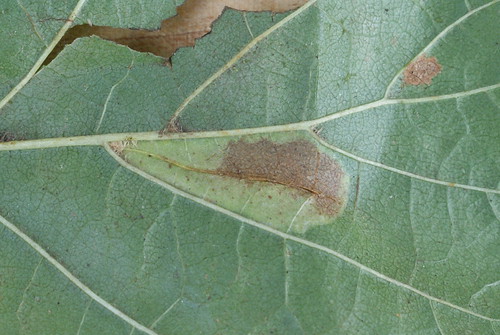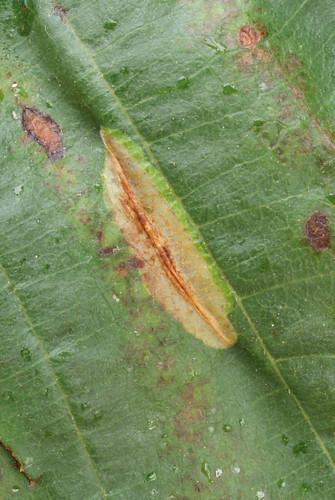Whilst 2012 didn't set the world on fire with regards to mothing, I still had plenty of highlights, some of which are illustrated in the collage below:

All the above from Kent, except the
P. oleae, however I did find mines of this species at a garden centre in Canterbury this year, so technically...
Large images, clockwise from top left:
Prays oleae - reared from larvae mining leaves of olive at Wentworth Garden centre, Sth. Yorks,
Ethmia terminella - back garden, East Kent,
Sciota adelphella - back garden, East Kent,
Esperia oliviella - Covert Wood, Kent
Medium images, top:
Nemapogon ruricolella - ancient hedgerow, East Kent;
bottom:
Elachista subocellea - old orchard windbreak, East Kent
Small images, clockwise from top left:
Micropterix tunbergella, Grapholita internana - back garden, East Kent
Metzneria aestivella - reared from larvae, Fowlmead CP, Deal, Kent,
Eucosma aspidiscana - daytime observation, Denge Woods, East Kent
Dave








 Larval hibernaculum made from several seeds
Larval hibernaculum made from several seeds
 Larva within opened hibernaculum
Larva within opened hibernaculum
 Larva extracted from hibernaculum
Larva extracted from hibernaculum








 As the mines can be quite numerous on each leaf and tend to be quite large too, they can still be located in fallen leaves or are also still visible on leaves that are still clinging on to the tree.
As the mines can be quite numerous on each leaf and tend to be quite large too, they can still be located in fallen leaves or are also still visible on leaves that are still clinging on to the tree.
 Phyllonorycter rajella leaf mine (underside)
Phyllonorycter rajella leaf mine (underside)
 Phyllonorycter stettinensis leaf mine
Phyllonorycter stettinensis leaf mine
